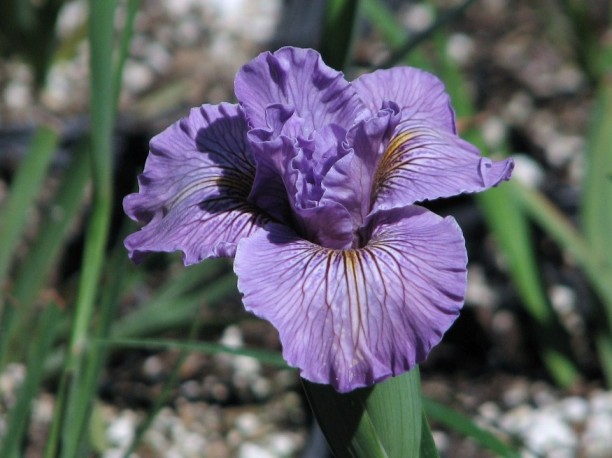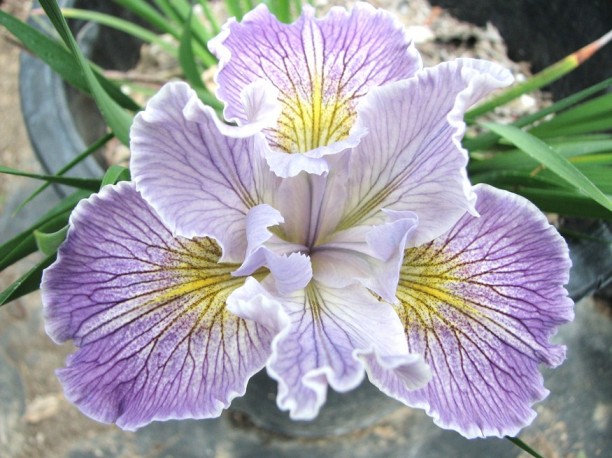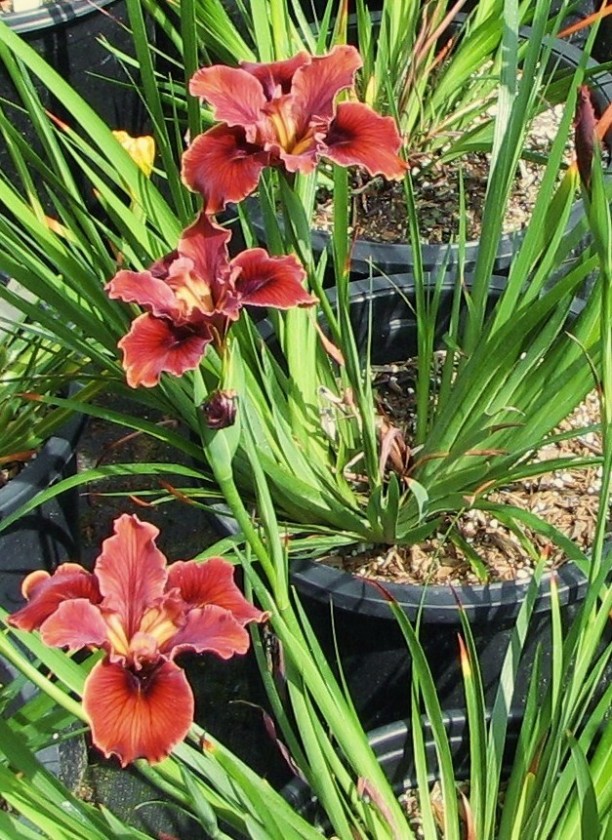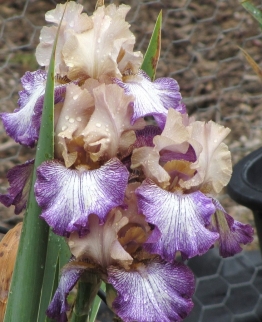So You Really Want to be an Iris Hybridizer?
Really? Ok, well this
is going to be a long- term hobby. It’s certainly an enjoyable one that permits
the hybridizer to be an artist by creating living things that are unique; sort
of like having kids without the college tuition. Please note too while this article focuses our hybridizing of pacific coast irises-the same applies to hybirdizing in general.
Let’s start with what hybridizing is: Hybridizing is the
affirmative act of collecting pollen from the male iris and implanting it in
the female iris. It involves collecting pollen and implanting it in the same
iris too, or “selfing”. No smart ass remarks here either. If a bee, the wind,
or another insect performs this function, it’s not the same.
Ok, how do I pick the irises that I want to hybridize or “cross”? That’s the big question that we’ll try to focus on. Remember again, this is a long-term hobby. If you cross something in spring, you won’t see the “flower” for at least 2 years. You still won’t have a clue as to whether or not you’ve really got something for another 1 – 2 years after that.
Let’s start the process with a couple of really simple goals. Frist, we’d like interesting flowers and maybe structure. Second, they have to be durable and survive in your location. This may seem like a big jump but it’s not. It’s the bare minimum. To grow something that’s not particularly beautiful isn’t very interesting and hardly worth the time. Additionally, to grow something that’s a knock out but kicks the bucket after the first flower, well, I’ve done plenty of that and it’s not a fun experience.
Now you’re ready to start. You need stock material. You want
to work with the widest array of different looking irises that grow well in
your area. That’s because the wider the array of traits you pick to start your hybridizing, the wider the array of offspring, and the more likely you’ll get something “interesting”. If you cross one lavender Iris douglasiana with another lavender Iris douglasiana you most likely will get a bunch of lavender Iris douglasiana’s. Hard to
believe I used to do this and wondered why I got the result I did. My friend, Richard Richards, straightened me out on this and didn’t laugh or call me names for being so dense.
So, now we’re going to get this wide selection of irises to cross – great! Let’s look at the second criteria, picking irises that grow well in your area. You can do this by asking your friends and/or going to public gardens and seeing which irises are growing well. You can also tap the power of the web. There are tons of iris sites as well as our on SPCNI
Facebook page where people will be happy to help you out. Remember, it does no good to go to all the trouble of crossing irises only to watch them kick the bucket in summer. If you
follow this plan, you should have some pretty good “stuff” by the 4th year or so.
The next step is letting some of your friends plant a few in
their gardens. If your irises are doing well in your friends’ gardens after a
year or so, chances are you’ve got something that should be registered. I did the same thing, only it took me a couple more years. I wish I’d had this road map, but we finally have a few things to register too. Some of these are shown below.



If you do this for a few years, after the 2nd year, it’s a pretty cool thing to have new irises that no one has ever seen, and you’ve created something each spring. Not exactly like seeing the birth of a child, but exciting none the less.
Note, we’ve stayed away from the “how to grow” information. There’s plenty of this on
the web and it’s also a different subject. We also didn’t cover how to hybridize for branching, ruffles, a blue rim, color, veining, snow, heat, etc. If you’re going to get into this sort of thing, you need a doctor’s note.
